Author: Greg Foster
I don’t brew very many lagers. It’s not that I don’t like them, though I generally do prefer ales, it’s mainly because I’m incredibly impatient. I simply don’t want to tie up my fermentation chamber for a month or two waiting for a lager to crawl to completion. It should come as no surprise that I’ve been keenly following the developments of the quick lager method and have successfully used it multiple times. This got me wondering just how far one could push lager fermentation before noticeable off flavors developed. Then the results of the last fermentation temperature xBmt were published demonstrating a lager fermented at ale temperature was indistinguishable from the same beer fermented at a traditional lager temperature.
I’m not entirely sure what’s going on with all the breaking of brewtonian laws of lager yeast, but I have a suspicion it has something to do with the seemingly magical strain, Saflager W-34/70. Fellow contributor, Malcolm Frazer, did some internet sleuthing and found that 34/70 seems to be a sort of hybrid strain, mimicking characteristics of both ale and lager yeasts. Cool! Curious to know just how impervious 34/70 is to high temperatures, I designed a torture test involving a rather absurd fermentation temperature usually reserved only for Belgian ales.
| PURPOSE |
To evaluate the differences between 2 beers of the same recipe split into separate fermentors and fermented with the same lager yeast strain at different temperatures, half at a cooler 60˚F/16˚C and the other half at a much warmer 82˚F/28˚C.
| METHODS |
Desiring a clean beer that would allow any off-flavors to shine, I brewed Marshall’s popular Munich Helles recipe for this xBmt, swapping out the noble hops for some Fuggles I happened to find in the back of my freezer. Everything in place, my brew day began with the crushing of the grain.
I adjusted my water profile with minerals and acid while the strike water was warming then, once to temp, mashed in and came close enough to hitting my intended 150°F/66°C mash temperature.
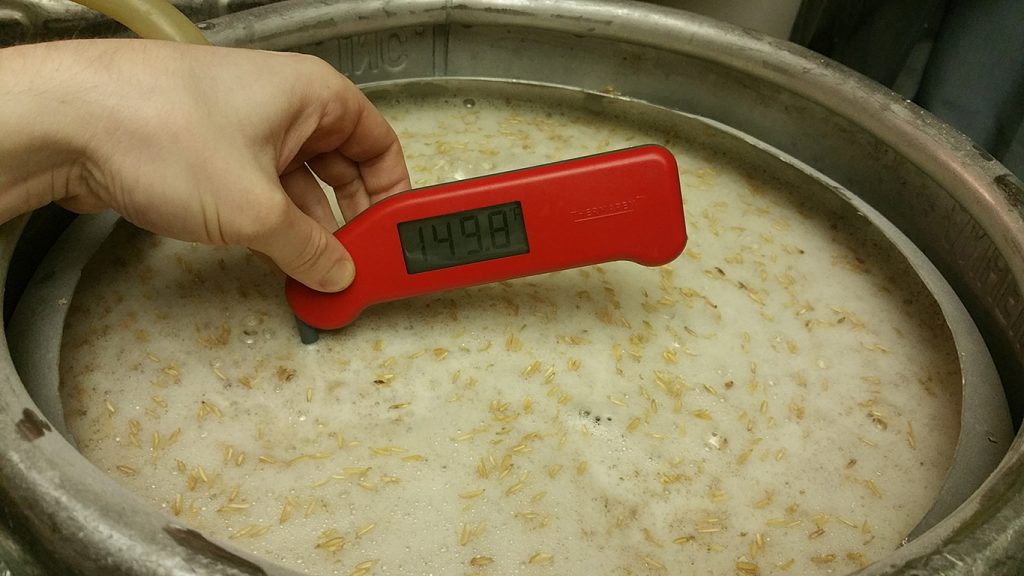
The wort was recirculated through my RIMS tube for a 60 minute single infusion rest after which I pumped it over to the kettle and brought it to a boil. Bagged kettle hops were added per the recipe and when the hour was up, I removed the hops and tossed in my immersion chiller.
With the assistance of a pump, the wort quickly fell to my desired pitching temperature. Despite previous xBmt’s questioning the importance of oxygenation, I still chose to hit my wort with 1 minute of pure O2.
The wort was then split between three identical corny kegs (2 xBmts in one) that would all be used as primary fermentors. I dissolved four packets of 34/70 yeast in a single volume of lukewarm water before splitting the slurry evenly between the three fermentors.
The fermentors used for this particular xBmt were placed in separate fermentation chambers, one set to 60°F/16°C and the other 82°F/27°C. I noticed the warm ferment batch had begun to show airlock activity within a couple hours. At 24 hours in, the warm ferment batch was going crazy with rapid fire bubbles in the airlock, while the cool ferment batch was moving along with demonstrably less vigor. By 2 days post-pitch, the airlock activity on the warm ferment batch had halted. I waited another day before checking the SG and discovered it had attenuated to the expected FG. To keep things equal, that beer was left waiting for its cooler counterpart to catch up. After a week, I slowly began bringing the cool ferment beer up to 68°F/20°C, this took 3 days. Airlock activity being absent, I took a hydrometer measurement. Sure enough, both beers had fermented to the same expected FG.
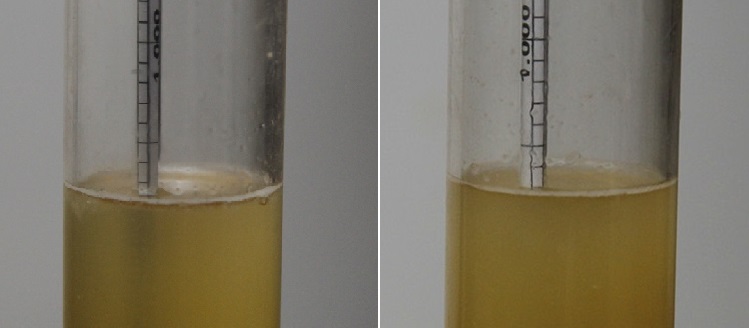
A couple days later, I cold crashed overnight then pressure transferred both to serving kegs.
It was at this point I realized I’d forgotten to fine with gelatin, which proved to be the perfect opportunity to test out another unnecessary and ridiculous creation of mine– the gelatin injector!
While both beers maintained a slight degree of haze when it came time to have them evaluated two weeks later, I observed the cool fermented batch to be noticeably clearer.
| RESULTS |
A total of 21 Strand Brewers Club members participated in this xBmt, each blindly served 1 sample of the beer fermented cool and and 2 samples of the warm fermented beer in opaque cups then asked to identify the one that was different. To reach statistical significance with this sample size, 12 accurate selections (p<0.05) would be required, and exactly that many were capable of doing so (p=0.021), suggesting participants were able to reliably distinguish between a beer fermented with 34/70 at 60°F/16°C from one fermented at 82°F/27°C. Finally.
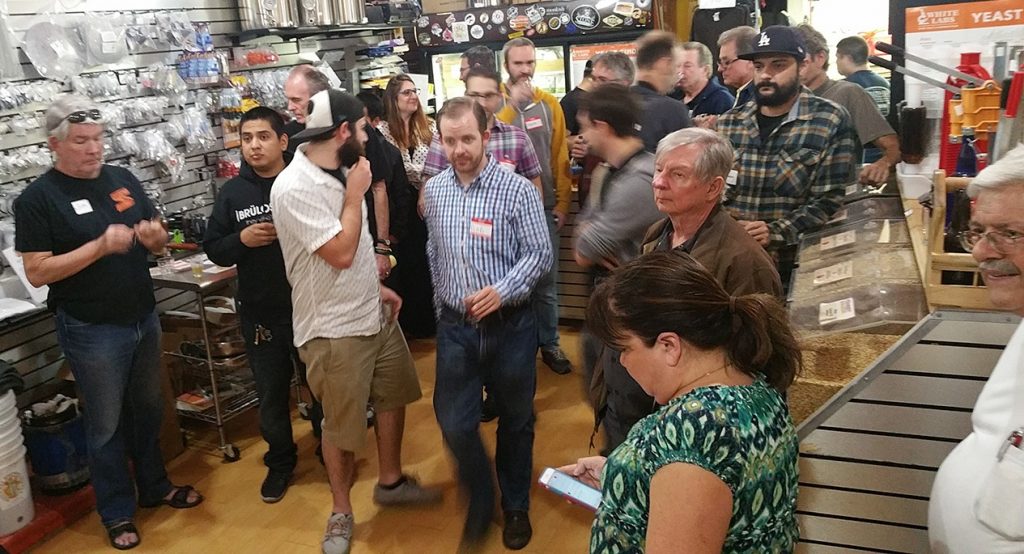
When those who were correct on the triangle test were asked which beer they preferred, 7 selected the warm ferment sample, 2 chose the cool ferment beer, 2 felt there was a difference but had no preference, and 1 thought there was no difference.
My Impressions: When I first sampled these beers, I was taken aback by just how similar I experienced them to be. I fully expected 82°F/27°C to have been far too warm of a fermentation temperature to make an acceptable lager, but after my initial taste, I was honestly unsure if I would be able to pass a triangle test. However, after noticing a distinct sulfur aroma, I was consistently able to pick out the unique sample in multiple blind triangle tests. It was actually quite easy, as the aroma gave it away every time.
| DISCUSSION |
The results of this xBmt suggest there may indeed by an upper limit to the temperature at which Saflager W-34/70 can be fermented without producing noticeable characteristics, as tasters were capable of distinguishing a Munich Helles fermented at 82°F/28°C from one fermented at 60°F/16°C. Not that this comes as a huge surprise, the packaging does recommend a max temperature of 71.6F/22°C after all, but I have to admit these results feel somewhat validating, particularly given the findings of the last few xBmts evaluating the same variable.
I can understand how some might view these results as largely meaningless since the chances anyone would intentionally ferment a beer, particularly a lager style, as warm as 82°F/28°C are slim. And while I also understand how easy it might be for those who didn’t sample these beers to assume they would have been among those who were accurate on the triangle test, I’ve got to say, the difference between the batches wasn’t nearly as vast I expected. Outside of exBEERimentation, I won’t be fermenting warm like this anymore, though for me, these results add more support to the idea that at least some lager yeasts may not be as sensitive to warmer fermentation temperatures as we’ve been taught.
Please feel free to share your thoughts on this xBmt in the comments section below!
Support Brülosophy In Style!
All designs are available in various colors and sizes on Amazon!
Follow Brülosophy on:
FACEBOOK | TWITTER | INSTAGRAM
If you enjoy this stuff and feel compelled to support Brulosophy.com, please check out the Support Us page for details on how you can very easily do so. Thanks!


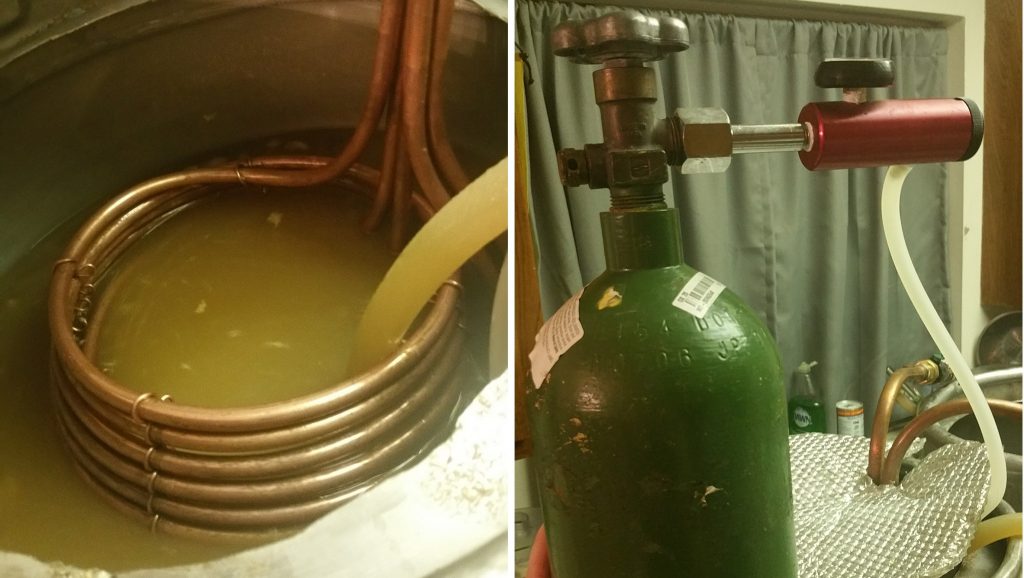
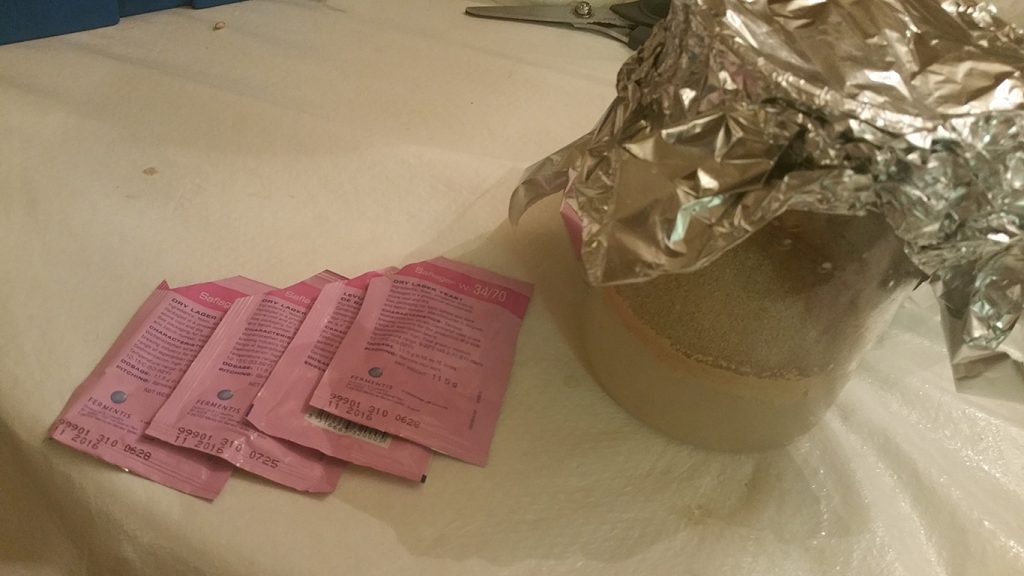
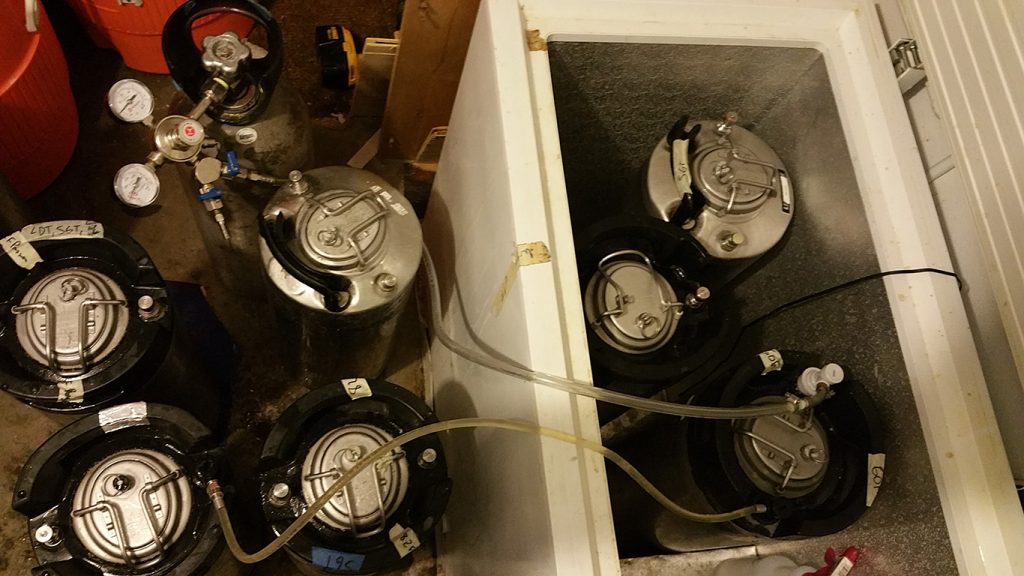
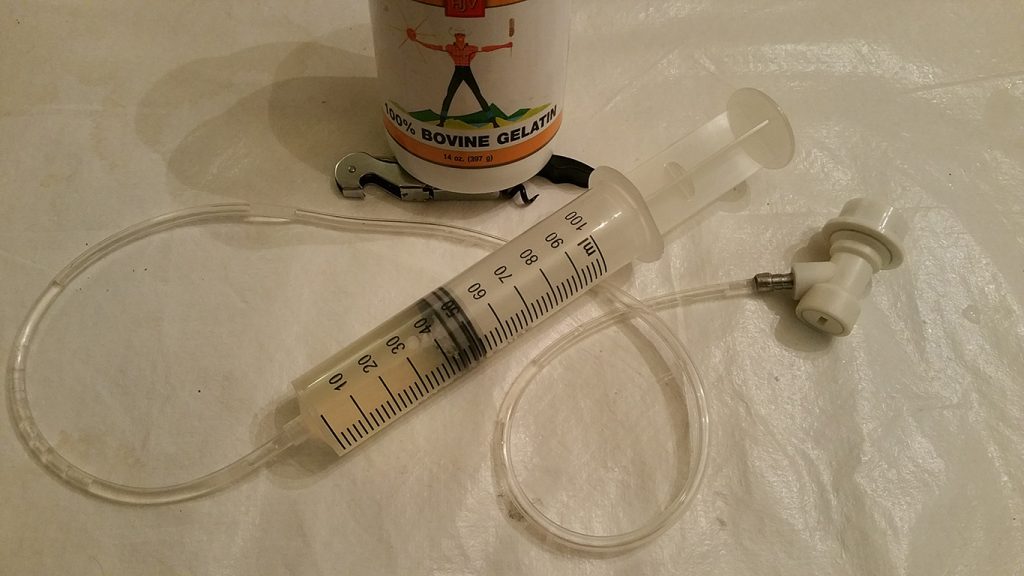











46 thoughts on “exBEERiment | Fermentation Temperature: Fermentis Saflager W-34/70 In A Munich Helles”
Greg, was there any preference among those who were able to distinguish between the samples?
One thing I’ve taken away from the ExBeeriments is that often there may be a difference between the two beers but which is deemed better is not clear–some like the one, some like the other.
Of the 21 tasters, 12 could distinguish between them, but 9 could not. Of those 12, was there a preference?
7 people preferred the warm fermented beer, 2 preferred the cool fermented sample, 2 thought there was a difference but had no preference, and 1 thought there was no difference.
So basically out of 21 people, 2 people thought the cold one was better.
Which means 7 people, one third, thought the 80F was an improvement.
And more than half didn’t notice or didn’t care.
We have to go higher!
Not related to lagers, but I did have one batch that had an unpleasant sulfur aroma. I was about to dump the batch, but a fellow homebrewer suggested I disconnect the gas line from the keg, vent off the CO2 from the keg, then rock the keg, then vent again, and so on, until I had most of the CO2 out of the beer. Then put the keg back on gas and get it charged back up.
And that did it! While venting out the CO2, I was also venting out the hydrogen sulfide along with it.
If you still have both beers, it might make an interesting follow-up xbeeriment to re-try the triangle test once you’ve removed the sulfur odor from the warm-fermented lager.
Interesting I wonder how high US-05 can go before it does more than tastea bit peachy.
Interesting results.
From the two experiments with 34/70 we can say with some confidence that you can ferment with a wide range of temperatures, including ones that are higher than we normally associate with lager fermentations, and still produce good lager characteristics. Eighty-two degrees is admittedly an absurd fermentation temperature and I don’t think most of us would expect a good result from it, but it turned out that it wasn’t as bad as you might assume.
I wonder to what extent 34/70 is an aberration? Can other popular lager yeasts be pushed to 70 degrees successfully?
They did WLP800 at 66F; that’s close enough for me.
Just a nitpicky note on a sentence in the intro: all lager strains are hybrid strains, not just 34/70. The difference between 34/70 and the Czech/Carlsberg strains is that 34/70 didn’t lose half of the S. cerevisiae genome.
It has been found out in an Australian DNA sampling of yeasts, that WLP800 is actually an Ale yeast and not the Pilsner Lager yeast everyone thought it was.
Awesome xbmt! I was rooting for 82f temp honestly.. 34/70 is a seriously awesome strain. Ever since the first 34/70 xbmt a few months ago I have been using 34/70 as my house “ale” strain at around 66f. Tastes clean like a lager and have been going grain to glass in 2 weeks! 3 weeks if it is high o.g. Would you all ever consider a xbmt where you compare a 50f, 60f, and 70f with 34/70?
The beers were evaluated after “lagering” for only two weeks. IME sulphur aroma is something that goes away after a bit of aging. So I’m left wondering if the beers would be distinguishable after a more reasonable amount of time? Either way, I fail to see the importance of this xbeeriment. There’s just no way I’m going to drink a lager without a bit of age on it regardless of the fermentation temp. If I were going to do that, I’d just use a clean American ale strain and be done with it.
FWIW, another month has gone by since the xBmt results were collected. I tried both beers yesterday and not much has changed, I can still easily distinguish between the two beers based entirely on the distinct sulfur smell.
One thing about that though, chemical reactions generally slow or speed up at a doubling per 10F. So any chemical reactions that are going on that result in HS being broken up and the sulfur being taken up by something else are going to occur much more rapidly at cellar temps than in a cold keg.
It is part of the reason why I stick with bottling, because I feel like aging at cellar temps for a few weeks is an important part of getting the beer to the right characteristics. Which doesn’t mean you can’t have a good beer 2-4 weeks after brewing it, but 4-8 weeks sitting at 62-68F in the bottle is going to produce significantly more aging than 2-4 weeks in a keg at 35-40F (the equivalent to roughly 3 or 4 months worth of cold keg aging).
Of course in my case, you also have the effect of the yeast being semi active to some degree as well, which you lose most/all of that when kegging.
Again, you can absolutely make a great kegged beer, I just think you have differences between that and a bottled beer.
Maybe that could be a good experibeer? Maybe bottle half a batch and keg the other half. Do the standard fermentation and carb with the one keg, but bottle with priming sugar for the other half. Test 1 month after bottling/kegging and see what the results are. I suspect something that is hop heavy will probably lean towards kegging, but I bet something that is more yeast character driven, or malt/specialty malt driven is going to favor heavily bottling.
I think he was intending it as a “lets see how far the rabbit hole goes” type of experiment. The other ones for ferment temp were very close but didn’t reach significance (I think none of the ferment temp tests reached significance). So this was “lets just push it to the limit” 80-90F is reserved for spicy estery beers like Belgians and Saisons, basically no other styles of beer are fermented in the 80-90 range.
So now people that want to make lager beers they know what their upper limit is for temperature controlling their lagers at, but don’t have active temp control methods like a fridge.
What *is* very interesting about this exbeeriment is the 9 people who couldn’t pick out the different beer in the triangle test. Certainly don’t mean to suggest I would nail this test, I want to think I would pick up the sulfur, but I probably would be one of the folks that picks wrong.
What is interesting is that before reading this I was like “Oh he’s gonna reach significance so easy on this exbeeriment” as soon as I read 82F was the warm ferment temp. This exbeeriment gives more credence to “temp control is more important than the actual ferment temperature”, I’d bet if the 82F was fermenting warm at ambient without active temp control it would’ve been much much more pronounced difference between the two beers.
I’m one of those people without active temp control. I haven’t made a lager yet… you know, all the people saying that the world will end if you try to use lager yeast at non-traditional temperatures sound pretty convincing.
Thanks to the last 34/70 experiment, I’m going for it. My next two beers are going to be SMaSH lagers using 34/70 at an uncontrolled 17-18 degrees C using the most boring base imaginable, pale 2-row (if there are flaws, this should show it), followed by Red X (never tried it, so why not?). I’m going to cold-crash and gelatin-fine in lieu of actual lagering, bottle condition as per normal, and maybe bow to convention and keep the bottles in my fridge for a week before cracking one open. I’m quite excited to taste for myself. I’m assuming, based on the experiments found on this blog, that I will indeed make lagers. Not exciting ones (at least not the first), but lagers nonetheless.
How about a similar test to see to what extent temperature control is the driver for a clean ferment? Use temperature control to simulate no temperature control – set the black box to swing maybe 10 or 20 degrees every 12 hours.
We’ve definitely talked about this, but it seems like such an unrealistic situation (such drastic temp swings) that we’ve bee putting it off to test more applicable variables. But we will get to it!
My garage swings at least that much every day this time of year. Nights in the high twenties or low thirties, days in the fifties, sunny and south facing…
Ambient might, sure. I suppose I could do that, but the delta of actual temp of the fermenting beer is likely to be much less than the ambient temp.
I’m not sure that the 10 degree swings are unrealistic. When I first started homebrewing I just stuck the fermentors in my basement which while it’s ‘heated’ was also the coldest part of the house (split level house, Michigan). Our house temperature varies from day to night thanks to a programmable themostat. So it might be 66-68 down there during the peak of the day and then the upper 50s the next morning on that concrete floor. Particularly in Spring/Fall.
Yesterday for instance that room was probably 68 degrees, right now it’s closer to 60 if not lower.
Right now for temperature control I’ve built an insulated box. I intended to heat with a paint can light bulb heater and cool with an AC unit. I failed to anticipate that my digital control panel AC unit wouldn’t work with the temp controller I picked. So right now I only have heat enabled to keep it up to a minimal temp.
What I’ve found though is interesting and backs up the idea that it’s swings, not pure control that may be a larger factor. Using that box to avoids swings in temperature since with the insulation it’s temp is drifting slower then the room and the bulb keeps it from getting too cool. My fermentation quality improved noticeably once I started using it, more then I thought it would given I have no way to cool the box right now.
So much so that while I have a manual AC unit to replace the one in the box with that I will be able to control, I’ve sat around and done nothing about installing it for almost a year now…. 🙂
Maybe I won’t be trying to pick up any san francisco lager yeast for my summer ferments. the basement keeps at about 65-70, so it looks like I can just keep upsing 34/70 all year round.
You said the yeast strain you used was a hybrid that mimics characteristics of ale and lager yeast. I wuld think this experiment would be a lot more applicable to lagers in general if you used a more definitively lager strain.
The 3470 Weihenstephan strain is the single most used lager strain IN THE WORLD, among commercial brewers. There is NO SUCH THING as a “more definitively lager strain.” 3470 defines lager as we know it. And it’s an incorrigible beast that performs well even when you abuse it. which is probably why it’s the number one lager strain on earth.
I use saflager s-23 (11-24C [51-75F], ideal 11-15C [51-59F]) instead of w-34/70 (9-22C [48-72F], ideal 12-15C [54-59F]). I went up to the same temperatures at hottest summer days. My impression is that off-taste, if you got one, mostly depends on quality/type of grain you use. and 90 min boil could help probably, too.
Just in reference to 34/70 lager yeast being a hybrid; that is nothing special – all lager yeast are hybrids between S. cerevesea and S. eubayanus:
http://www.livescience.com/15687-missing-lager-beer-yeast.html
That aside, 34/70 does appear to work reall well for warm-ferment lagers. Motivated by earlier posts at brusophy I’ve brewed a pils and vienna using 34/70at 20C; both turned out great and have no flaws that would suggest they were not lagered properly. Next up I’m trying a helles bock to see how well it works with a lower-gravity lager
Good point, I could have worded the hybrid sentence better
Thanks, another interesting experiment. Regarding 34/70’s ale-like qualities – I once brewed a split batch light lager with Danstar Nottingham and 34/70, both fermented cold. I honestly couldn’t not tell the difference – taste, appearance, krausen, fermentation time were all identical. Make if that what you will.
I do think an exbeeriment comparing the fast lager method to traditional cold ferment would be worth a go. I’m 99% sure they’d be indistinguishable, but without that result all the lager temperature exbeeriments are slightly uncertain.
So, were there any off flavors? Or just a sulphry aroma?
Also, are you doing a full volume mash?
Hard to say. No obvious flavor specific differences I could detect, but it’s difficult/impossible to isolate flavor from aroma
My fermentation freezer broke a few months ago so I have been brewing ales exclusively since. In the past I was brewing about 50% lagers. Since reading these xbeeriments I decided to give 34/70 a shot – warm. Brewed a Pivo pils like beer fermented at 66-68. It turned out great – 1 week after kegging. I have brewed this 4 times before with WLP800 and 830 at 50 degrees and this was as good. Actually better than the ones with 800. As a result I now have a Dortmunder fermenting now with WLP800(vitality starter) and a CAP with 34/70. Both are sitting at 66 degrees. I am looking foward to the results.
If you search lager fermentation temperature there are so many warning about off flavors at higher temps made with such conviction that one would never consider doing it. In fact I would never have considered doing this without reading these exbeeriments, so thank you guys!
Well over here in Malaysia, our room temperature is around 30c, so for those without a spare fridge or some kind of fermentation chamber that can take the temperate down, that’s our ambient fermentation temp. Saisons do well around that range (unsurprisingly) but I’m rather surprised a lager yeast well out of it’s range will probably be very drinkable fermented at 30c.
In essence, didn’t lager yeast “evolve” to use less energy over an extended period of time? That is, heat energy at low levels such as those found in caves in northern Europe? If that’s the case, doesn’t it make sense that you can add a bit more energy to shorten the working time of the yeast without substantially changing its output (lager beer)?
Interesting brief read on the lager genome.
http://www.latimes.com/science/sciencenow/la-sci-sn-lager-yeast-genome-20150811-story.html
Been lagering my Budvar clone at 37 F since December 30th. Hope I’m not wasting my time.
People interested in the quantifiable differences between the two lineages of lager yeasts might be interested in this paper:
Gibson et al 2013. Comparative physiology and fermentation performance of Saaz and Frohberg lager yeast strains and the parental species Saccharomyces eubayanus. Yeast 30:255-266
http://onlinelibrary.wiley.com/doi/10.1002/yea.2960/full
In case you can’t access the paper, here’s the abstract:
Two distinct genetic groups (Saaz and Frohberg) exist within the hybrid Saccharomyces pastorianus (S. cerevisiae × S. eubayanus) taxon. However, physiological/technological differences that exist between the two groups are not known. Fermentative capability of the parental S. eubayanus has likewise never been studied. Here, 58 lager strains were screened to determine which hybrid group they belonged to, and selected strains were characterized to determine salient characteristics. In 15 °P all-malt wort fermentations at 22 °C, Frohberg strains showed greater growth and superior fermentation (80% apparent attenuation, 6.5% alcohol by volume in 3–4 days) compared to all other strains and maintained highest viability values (>93%). Fermentation with S. eubayanus was poor at the same temperature (33% apparent attenuation, 2.7% alcohol by volume at 6 days and viability reduced to 75%). Saaz strains and S. eubayanus were the least sensitive to cold (10 °C), though this did not translate to greater fermentation performance. Fermentation with S. eubayanus was poor at 10 °C but equal to or greater than that of the Saaz strains. Performance of Saaz yeast/S. eubayanus was limited by an inability to use wort maltotriose. [14C]-Maltotriose transport assays also showed negligible activity in these strains (≤0.5 µmol min−1 g−1 dry yeast). Beers from Saaz fermentations were characterized by two- to sixfold lower production of the flavour compounds methyl butanol, ethyl acetate and 3-methylbutyl acetate compared to Frohberg strains. Higher alcohol and ester production by S. eubayanus was similar to that of Frohberg strains.
Fermentation temp matters little get over it. The same is true for Mash temp. The anal dogmatic brewing beliefs are just so annoying. What you put in the kettle is what comes out. I’m just glad I didn’t buy a huge expensive junkie rig based on all these beliefs. Explain to me why the people who could taste differences preferred the warm one.
Heres a great question and a good experiment for marshalls psychology background. Why are people so married to how they brew beer and why are they so afraid to experiment or change anything?
Have to agree with this..
where did you get the oxygen tank regulator in the photo?
Williams Brewing https://www.williamsbrewing.com/OXYGEN-REGULATOR-FOR-WELDING-TANK-P3476.aspx
Not sure if it’s the exact same but I use this one.
https://www.williamsbrewing.com/OXYGEN-REGULATOR-FOR-WELDING-TANK-P3476.aspx?gclid=Cj0KEQiA6_TBBRDInaPjhcelt5oBEiQApPeTF1CeqMqZ2uVCkXOBQ5eR2kl17VE3zgQRO8RzgTTia64aAuV78P8HAQ
That is very intresting. Something that would make it alot easier to brew lager in higher temperature climates. I live in Sweden and brew lager with 34/70 in the winter since I have a steady 11-12C in my garage. The beer taste awsome but now I might try it even when it gets warmer. Great piece / Peter
I am not yet sold on this for 34/70, I did 19C ferments, and got a fruitiness I would not expect from a true lager ferment, it would not have scored well in a comp. Reminded me of trying to make lagers with us05. I have done several true lager 9C ferments and never seen this with liquid, I also don’t get if I ferment 1272 etc at low end of range. I have a second 19C 34/70 on carb, if thats fruity as well then I am not sold.
Of course 34/70 will throw off fruit at that temp. If the beer gods are on your side you can get away with using those yeasts at those temps. Being a mostly lager (home and work) brewer I would not recommend it. I would also not advocate underpitching any yeast or grossly overpitching or not cleaning something correctly. That said it doesn’t mean that the beer you make is no good. IMO you can use 34/70 up to 13C and no more, 10 is my usual ferment temp. Get yourself a schedule and RDWHAHB and just be patient for a good clean lager. All said while drinking a Finn Diesel IPA by Feral.
First, nobody mentioned fruit. The experimenter mentioned sulphur, but only after repeated tastings, and that otherwise he was surprised at how similar the samples were.
Second, you wouldn’t recommend a temp that resulted in a beer most tasters preferred over a beer fermented at the ‘correct’ temp? And a whole lot of other people couldn’t tell the difference at all? Why? ‘IMO’ is all good and well, but here’s hard evidence to add to the pile of evidence from past XBMTs it makes no difference, and if it does, people prefer the warmer beer.
Your sulfur smell should be diminished in a beer fermented warm if you supplement with some yeast food like Superfood or Fermaid-O or the likes. If you use DAP, use just a small pinch. We ferement a lot of cider and get a H2S smell if there is not enough nutrient added to the cider before fermenting. Also you might try adding copper sulfate immediately after racking and fining to bind up the Mercaptans so they are not pronounced in the smell. Not much Copper, maybe just a few “older” pennies added to your cleaned warm fermented beer would all that would be needed…. just for about 48 hours only.
Also I just got done doing an Xberiment of my own with a hybrid mixture of yeasts. 100ml of S-23, 100ml of S-189 and 50 ml of Omega Voss Kveik (actually a very warm temperature ale yeast from Norway) Fermented to FG in about 2 days. Fermentation temp was 72 F. No sulfur or esters smells so far. Will fine with gelatin and let it set in a secondary about a week before racking to a keg.
Have to wonder if maybe pitching rate is the unexplored variable here. Would the yeast be more sensitive to temperature without so many cells? Most homebrewers are not going to be pitching two packs of yeast into their beer. Would the same results attain with only one pack of yeast? I’d love for the answer to be yes.
Encouraged by this experiment, I try Dark Lager with W-34/70 fermented on 26’C, without cold crash, and it turned very god and tasty. Without any bad taste or smell.
just made a helles using carahell for the first time. nothing else was really different from my usual lager methods. fermented w-34/70 at 65F and have a lot of what i believe is hydrogen sulfide. i was shocked! never had that before in a lager. disappointing. not sure what i did.
More than 4 years after, this test is very useful for me. Good job. Well thank you.